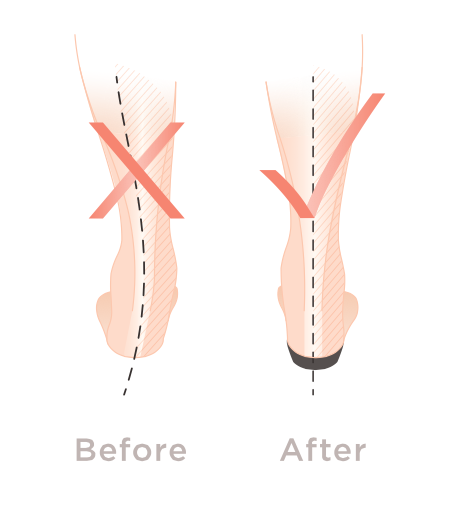|
Have you ever stepped out of bed in the morning, placed your feet on the flat floor and immediately felt a dull or even stabbing pain in your heel? This heel pain is commonly known as plantar fasciitis, a condition that develops when the plantar fascia tissue becomes inflamed. This particular tissue is a ligament attached at one side to the heel bone. At the other side, the tissue fans out to attach at the base of each of your five toes. When the plantar fascia is excessively stretched, micro-tears can occur, causing this swelling and subsequent pain. Symptoms of Plantar Fasciitis A sharp pain in the center of your heel will most likely be one of the biggest symptoms of plantar fasciitis. A classic sign of plantar fasciitis is when the pain is worst during the first steps you take in the morning. What Causes Plantar Fasciitis? Plantar fasciitis can develop when your feet roll in too far as you take each step. This rolling in, known as over-pronation, can happen for many reasons. It can be due to excessive weight gain, pregnancy, quickly increasing physical activity, tight calf muscles, poor biomechanics or merely wearing unsupportive, flat footwear. When your feet over-pronate, your arches can collapse, putting strain on the tissues in the bottom of your foot. How to Find Relief The Vionic Innovation Lab offers five healthy, non-invasive tips for preventing or reducing plantar fasciitis. #1 ICE AND REST. After mild stretching, use a frozen water bottle to roll under the arch of your foot for 10-20 minutes. #2 STRETCH REGULARLY. Keeping your calf muscles limber helps to reduce the strain on the plantar fascia. To stretch your calves and Achilles tendon, stand on the edge of a step, resting your weight on the balls of your feet. Bend your knees for 25 seconds and then straighten. Perform up to five repetitions whenever tightening occurs. #3 PRESERVE YOUR ARCH WITH STRENGTHENING EXERCISES. While seated and barefoot, squeeze your foot as if you have a small marble under the ball of your foot. If you just happen to have a few marbles handy, you can actually practice picking them up between your toes and ball of your foot–and then set them down again. This stretches and helps strengthen the muscles that run under metatarsals (the longest bones in the foot which create its arched shape). #4 SLOWLY INCREASE PHYSICAL ACTIVITY. If you're a runner, a tried-and-true method of preventing over-use injuries is to only increase your mileage by 10 percent weekly, max. If you’re new to a walking program, the same caution should be exercised. #5 BREAK THE CYCLE WITH SUPPORTIVE FOOTWEAR. Biomechanical plantar fasciitis can be easily reduced by correcting misalignment  of the feet. Wearing orthopedic shoes for plantar fasciitis and orthotic inserts is an easy, effective method of naturally realigning the foot. Worn consistently from first thing in the morning to last thing at night, orthotic support can reduce and sometimes eliminate plantar fasciitis.* of the feet. Wearing orthopedic shoes for plantar fasciitis and orthotic inserts is an easy, effective method of naturally realigning the foot. Worn consistently from first thing in the morning to last thing at night, orthotic support can reduce and sometimes eliminate plantar fasciitis.* * Provides short-term relief of moderate non-traumatic heel pain. .jpg) About Vionic Footwear About Vionic FootwearVionic footwear merges unparalleled biomechanical technology with versatile, modern design fit for every occasion. Developed by Phillip Vasyli, renowned Australian podiatrist and founder of Orthaheel® Technology, Vionic shoes help restore natural foot function and relieve heel pain, promoting a more active lifestyle. Vionic’s footwear and orthotic inserts are also endorsed by noted integrative medicine expert, Dr. Andrew Weil. With premium materials, artful construction and streamlined silhouettes, Vionic’s men’s and women’s collections provide standout style with exceptional comfort and functionality. |
Popular EntriesMore From SparkPeople
|














